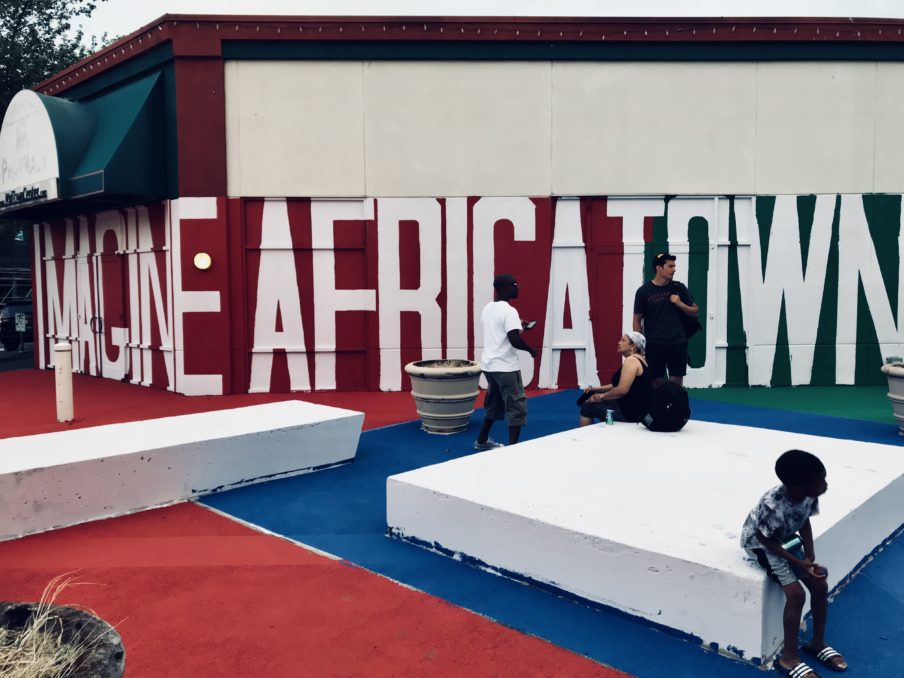With the rise of global warming and the subsequent need for sustainable design, landscape architects have been pushed to think a lot about the environmental impacts of their design choices. However, a key factor is missing when urban development occurs: effects on local communities. Yes, there is a need for green revitalization. But whose homes are we sacrificing for it and what communally-valued space are we taking with our ambitiously eco-friendly initiatives? As Diane Jones Allen mentions in her Landscape Architecture Magazine entry, environmental justice and racial equity/ community engagement should be on the same level. She argues that climate change and systematic racism are both pressing issues that can be addressed through strategic and intentional design.
A couple months ago, I had the pleasure of attending a lecture by Sara Zewde, an inspirational “landscape designer, urbanist, and public artist,” in her own words. She focused on a few projects that really highlighted how preserving the heritage of a site fights racial inequity.
One of the projects she talked about was Valongo Wharf. Located in Rio, Brazil, the site was once the busiest Trans-Atlantic slave port. However, bits of the historic port were not discovered until construction for the 2016 Rio Olympics tore through an urbanized layer of city. Clearly, the Afro-Brazilian community wanted to keep this part of their history un-buried. Through extensive research and analysis, Zewde incorporated the neighborhood’s slaving industry history and Afro-Brazilian culture into a memorial design that would remind citizens of the said culture and history in their everyday lives. For example, her firm used a tree, native to Africa, that represents strength and ancestral pride.

Another interesting project Zewde had previously worked on was titled Midtown Activation–a project that focused on giving a disadvantaged community “a place to be,” “a place to prosper,” and “a place to play.” The site is culturally valued in the black Seattle community, but was under pressure from surrounding developmental initiatives. Zwede’s firm took this inner neighborhood and transformed it into “Africatown” with an outdoor living room and vivid colours painted on the ground to represent the presence of the people that lived there. In addition to preserving culture and heritage, the construction of Africatown was largely a community effort thanks to the influx of volunteers and the hiring of previously unemployed young adults.

Sara Zewde’s lecture really opened my eyes to what landscape architecture can achieve. It’s not just about creating sustainable places, and it’s most definitely not just backyard design. As stated in our department’s mission, we are focused on “inspired place-making based on environmental and social good.” AND social good. The two are equal.

